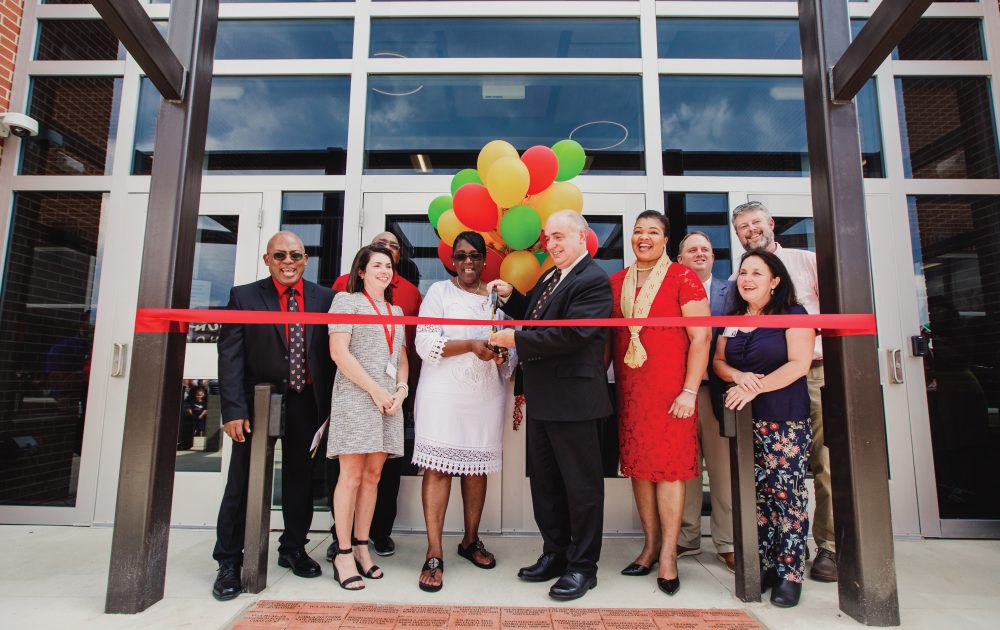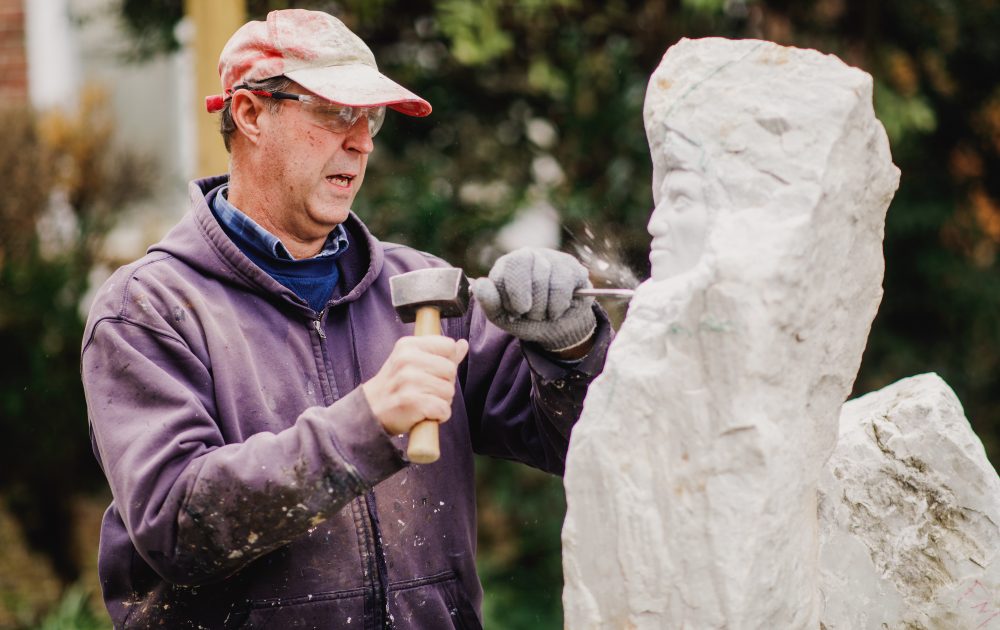
Trigger warning: This article contains details of rape and sexual assault that may be upsetting. For anyone in the NWGA region who is struggling with rape, sexual assault, abuse and its associated effects (PTSD, depression, anxiety, etc.) please reach out to the Sexual Assault Center of NWGA (www.sacnwga.org) or find your nearest crisis center (https://centers.rainn.org/).
*Name has been changed for protection.
Breaking Down the Backlog: The Price of Power & the Path to Healing
A lot can happen in 24 hours.
What happened in your life today? After that first sip of coffee, you navigated the next 1,440 minutes of the day amid a swirl of activity. Maybe you barely got to work on time because the kids forgot their lunches. Perhaps you carved out an hour of your schedule to work in some time at the gym. Possibly you squeezed in some time to read before bed or binge watch that new series everyone’s talking about.
But something else happened today. More than 880 Americans were sexually assaulted. That’s just from today. Only a third of those assaults were likely reported to law enforcement. Meanwhile, on the state level, the Georgia Bureau of Investigation received roughly 10 new rape kits today, adding to their ever-growing pile of ongoing cases.
Like a vicious virus, sexual assault and rape continue to spread. Within this conversation surface many topics that hold many questions: victim blaming, consent, adequate funding, the legal system, prevention education, victim resources, evidence… the list goes on.
But when it comes to sexual assault, there’s one question at the center of it all.
Why do rapists rape in the first place?
The Worst Kind of Control Freak
This question has been asked and explored in great depth for centuries. Moreover, psychologists have found the answer is the same as with most violent offenders. It isn’t about passion. It isn’t about sex.
“It’s all about power and control,” says Alice Williams, a therapist based in Rome, Ga. “People think it’s a sexual thing, but it really has nothing to do with sex.”
Faith*, a woman we met in Part I of this series who survived being raped by her best friend in 2011, says she believes her rapist was angry because even after he’d expressed an interest in her, she chose to just remain friends.
“I don’t think that it was ever about sexual desire,” Faith says. “I think that I had hurt his ego and he wanted power in order to feel better.”
In a 2015 article published by The Daily Telegraph, a newspaper based in London, England, an anonymous serial rapist delves into the reasons why he repeatedly raped women before he was incarcerated.
“I did it because it was exciting. It was a buzz,” says John*. “It gave me a certain feeling of power over that person… I’d had some very bad experiences as a child and I was trying to make myself feel good again. I wanted to feel in control.”
Williams, who works with victims of sexual assault and domestic violence, says many rapists have a history of being victimized in some way, as well.
“Most people that rape were molested when they were kids or at some point in their lives,” she says. “It’s like they’re getting a part of (their control) back. It causes mental illness. And, well, some people are just evil.”
According to the Rape and Incest National Network, the majority of rapists and assaulters know their victims. Fifty percent of offenders are age 30 and older and 57 percent are white. They’re also most likely to be repeat offenders, with 60 percent being arrested for a new crime within 5 years.
But while it’s unlikely that most rapists will ever see the inside of a jail cell, Faith says she feels they’ll get their comeuppance eventually.
“I wanted (my rapist) to see me stand up and say, ‘I’m speaking out about this.’ Regardless of whether or not anything happened to him, he still has to deal with the consequences to some degree.”
Sometimes Answers Create More Questions
After being interviewed for this series, Faith gathered a tremendous amount of strength and requested a copy of her file from the Sexual Assault Center.
“They told me not to look at it when I was alone,” says Faith. “I kept carrying it around to find a time when I was around someone who cared about me so we could look at it together.”
But the constant presence of the file containing the most traumatic night of her life made Faith feel sick. After lots of mental and emotional preparation and several discussions with her therapist, she opened it.
“I think that because of where I’m at in my healing journey, it wasn’t as hard to look at as I thought it would be. I had prepared myself for it and it didn’t send me back into trauma.”
The file contains an outline of a generic body as well as diagrams of specific body parts. Areas of the body are circled and numbered where Faith’s rapist injured her, forcing her into submission for intercourse. There were 11 visible injuries on Faith’s body, a
non-visible injury on the back of her head and three external injuries on her genital area.
“Seeing everything in the file was validating,” she says. “It marks every single place he hurt me on my body. It wasn’t like I laid down and someone had sex with me. It was very violent. I had been told by people for so long that I blew it out of proportion, but to see it tells me I wasn’t taken seriously. The reaction I had was justified and appropriate. It was affirming.”
Within the pages of tiny black type, the graphic diagrams and her written account of the assault, there was a scrawled signature belonging to a police detective depicting that Faith’s rape kit was released to and picked up by the law enforcement agency that worked her case.
However, Faith’s rape occured in 2011 when there were no Georgia laws to enforce a mandatory submission of the kit to the crime lab. It’s unclear whether or not her kit was sent to the GBI and what ended up happening to the evidence.
Faith does know that police officers never arrested her rapist, so whether they didn’t find enough crime scene or circumstantial evidence is something to speculate. There wasn’t a witness during the assault so, as with most rapes, Faith’s case was a He-Said/She-Said situation. Without an arrest, Faith’s legal case against her rapist died almost as fast as it had been formed in the first place.
Because of changes in state law we explored in Part II of this series, law enforcement agencies decided whether or not a kit went to the crime lab for testing prior to 2016. If they didn’t send it, the kit would sit in their evidence room collecting dust. Also, if a victim had an exam and kit done, but didn’t officially report a rape, the crisis center would keep the kit for a time but would eventually destroy the evidence in order to make room for new cases.
“Often times if the story was non-believing, or there wasn’t enough evidence, the kit didn’t get sent in prior to the new law,” says Kim Davis, director of the SAC of NWGA. “At the end of the year, we would usually destroy it.”
That’s no longer the case, thankfully, but for victims who survived a rape before 2016, this can be devastating news.
“It makes me angry,” says Faith. “To find out they had it, and now… who knows where it is or what happened to it? I don’t know if mine was destroyed or not, but when I think of (law enforcement or crisis centers) having to destroy kits during that time period, that’s immensely hurtful.”
“It’s like something that changed my life forever was thrown in the trash,” she continues. “Someone takes this monumental event of violence towards you and says it matters so little that we’re going to destroy it.”
The double whammy? Faith’s rapist had confessed to her that he had also raped other women, and she was hoping that even if nothing happened with her specific case, his DNA evidence would be on file so as to help another victim in the future.
“I had confidence in knowing that even if I didn’t get a trial, they had that evidence in case he ever raped someone again and that woman would be believed,” she says. “So if my kit was destroyed, it feels like all of it was in vain.”
After her experience, Faith says Sexual Assault needs to be taken more seriously by not just law enforcement, but everyone. Rape culture is real, she says, and we live in a society that constantly perpetuates violence and hatred toward women. She also thinks laws need to change so that victims receive better justice.
“Sexual assault needs to be a full-scale investigation,” she says. “I understand it can be hard with DNA and lack of witnesses, but when someone has bruises all over their body and they’re bleeding from the vagina, and you still don’t make an arrest? It blows my mind.”
Keep Fighting the Good Fight
It’s been eight years, and Faith is going strong along her path of healing. Surviving a rape or assault causes effects that people have to manage for the rest of their lives. Furthermore, healing looks different for every victim.
“It’s a long process,” says Williams. “Victims will always have triggers, but they are able to handle it better with therapy and as time goes by. They realize they can get through this.”
Living through her assault has made Faith appreciate the foundation of strength her friends and advocates helped her build brick by brick.
“I experienced an assault but I also experienced finding courage, standing up for myself, getting therapy and all of the women who surrounded me and supported me. I wouldn’t take that experience out of my life. It helped shape me. I am grateful for that healing.”
As for the wider scope of rape culture, Faith says we must continue to have these conversations. We can create a world that supports victims who come forward, doesn’t blame them, and works toward the prevention of rape and sexual assault as well as getting mental health support for those who violently seek power and control. In that sense, anyone and everyone can become an advocate for victims of rape and sexual assault.
“We as a society don’t believe victims like we really should,” says Davis. “It’s frustrating and I feel like it’s a fight advocates are always going to fight. But that’s why we’re here.”
This concludes the Breaking Down the Backlog series. If you or a loved one are struggling with rape, sexual assault, abuse and its psychological effects, please know we 1. Believe you, 2. It’s not your fault and 3. There is hope. Reach out to the Sexual Assault Center of NWGA (www.sacnwga.org) or find your nearest crisis center (https://centers.rainn.org/).



